
Skunk scat images are important for identifying the presence of skunks in an area. Skunks are notorious for their strong odor and are often considered a nuisance by homeowners and gardeners. Identifying skunk scat can help individuals take appropriate measures to prevent skunks from causing damage to property or spreading diseases.
Skunk scat is usually found in small, cylindrical shapes and can be mistaken for other animal droppings. However, skunk scat has a distinct odor that can help identify it. In addition, skunk scat may contain undigested food items such as insect parts, seeds, or bones. Skunk feces images can be useful for identifying these characteristics and distinguishing them from other animal droppings.
Skunks are known carriers of diseases such as rabies, and their presence in an area can pose a risk to humans and pets. Identifying skunk scat can help individuals take appropriate measures to prevent contact with skunks and reduce the risk of disease transmission. By using skunk scat images, individuals can become more knowledgeable about skunk behavior and take necessary precautions to protect themselves and their property.
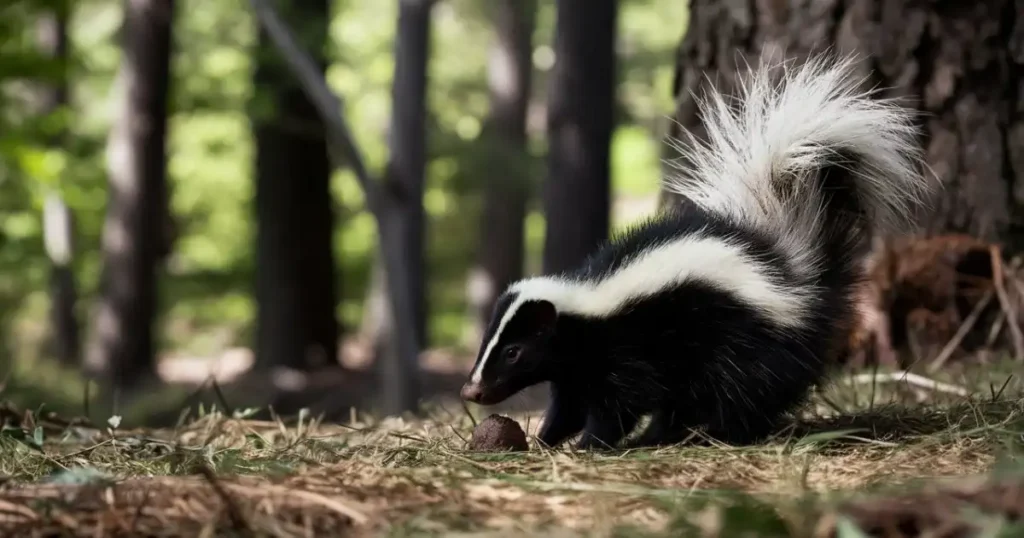
Skunk scat, also known as skunk poop, is easily identifiable due to its distinct size and shape. It is usually about 1/2 inch in diameter and 2 to 4 inches in length. Skunk feces are typically dark brown or black in color and have a strong, pungent odor.
One way to identify skunk scat is by its contents. Skunks are omnivores and their feces may contain a variety of materials, including insects, fruit, seeds, and small animals. The presence of these materials can help distinguish skunk scat from feces of other animals.
It is important to differentiate skunk scat from the feces of other animals. One common mistake is to confuse skunk scat with that of a dog. While both may be similar in size and shape, skunk scat usually contains insect parts and has a stronger odor.
Another animal whose feces may be confused with skunk scat is the raccoon. However, raccoon feces are typically larger and have a more tubular shape. They also tend to contain bits of undigested food, such as seeds and berries.
Overall, identifying skunk scat is important for understanding the presence and behavior of skunks in a given area. With these tips, it's easy to tell the difference between skunk skat and other animal skat. Also, to add to this explanation, civet cat skunk is a skunk species, so their feces are the same.
Skunk scat can be identified by its distinct shape and odor. Here is a visual guide to help you identify skunk scat in the wild.
Below are some photo of skunk poop to help you identify it in the wild:

Skunk poop is usually tubular in shape and can be up to 2 inches in length. It smells strong and musty, and you can smell it from far away. Here are some skunk poop photo to help you identify it:
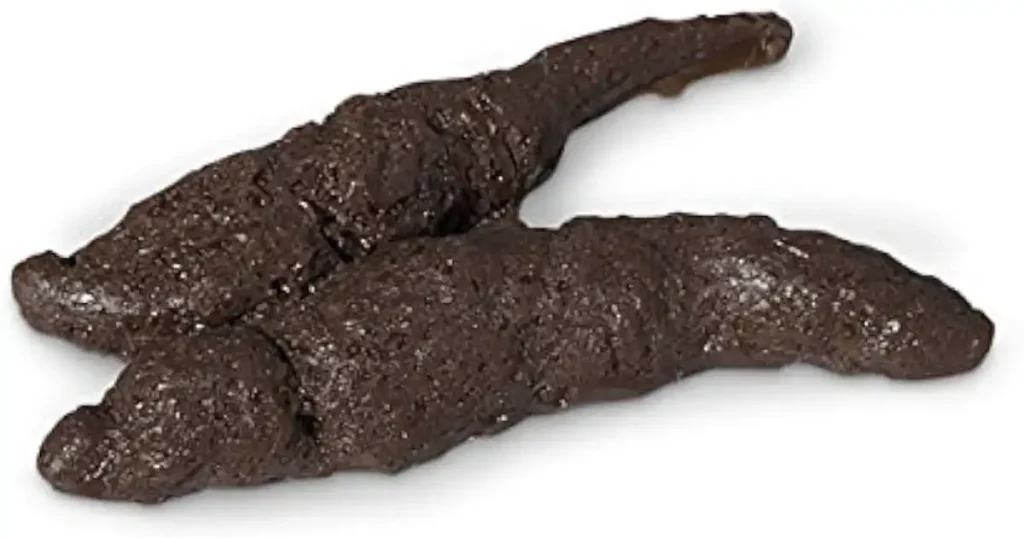
Always be careful when getting close to skunk scat because skunks have a strong smell and can spray if they feel threatened. By using this visual guide, you can identify skunk scat in the wild and avoid any unwanted encounters.
Skunks are omnivores, which means they eat everything. They eat bugs, small mammals, fruits, and vegetables. What they eat depends on the time of year and the amount of food that is available where they live. Skunks' digestive system is different from ours, so it can break down a lot of different foods and get nutrients from them.
Skunks have a simple stomach and a relatively short digestive tract compared to other mammals. Food undergoes a process of breakdown in the stomach before being transferred to the small intestine, where the majority of the essential nutrients are absorbed. After that, the remaining material moves to the large intestine where it absorbs water and forms feces.
Skunk scat typically has a dark brown or black hue and emits a potent smell as a result of sulfur compounds. The consistency of skunk scat can vary depending on the diet of the skunk. Skunks that feed on a high protein diet tend to produce harder, drier scat, while those that feed on a diet rich in fruits and vegetables produce softer, more moist scat.
Skunks have a remarkable talent for emitting a rather unpleasant odor when they feel threatened, although this odor is not generated in their digestive system. Instead, it is produced in specialized glands located near the anus. Skunk scat may contain traces of this liquid, which can make it smell even worse.
Ultimately, skunks possess a remarkable digestive system that enables them to derive essential nutrients from a diverse array of food sources. Their diet has a significant impact on the appearance and odor of their scat. By understanding the biology of skunk digestion, we can better appreciate the role these animals play in the ecosystem and the importance of their conservation.
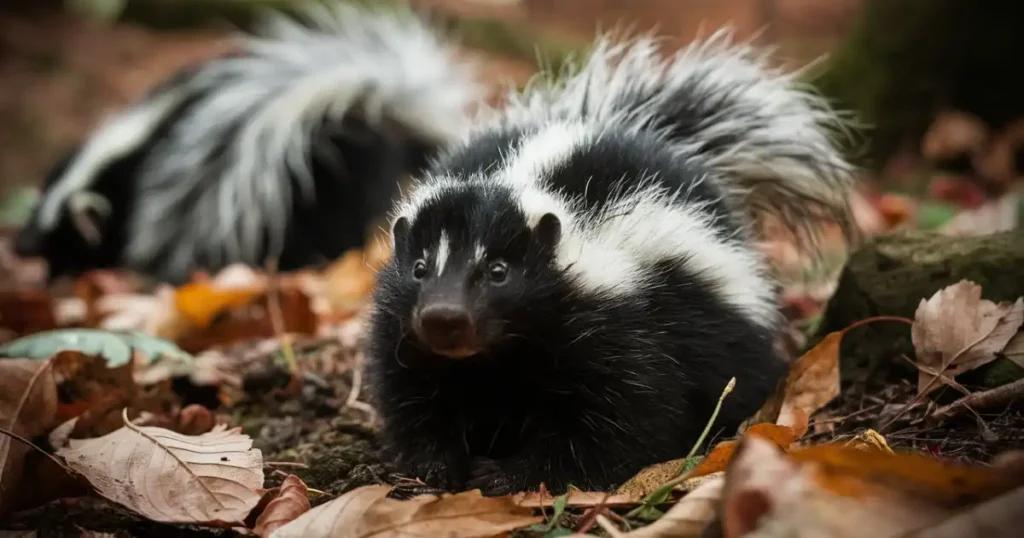
Skunk feces, also known as skunk scat, can pose health and safety concerns for humans and pets. One of the main hazards associated with skunk feces is the strong and unpleasant odor that it emits. The sulfur compounds in the feces, which can be challenging to remove and can linger for a very long time, are what cause the skunk poop smell. Exposure to the smell of skunk feces can cause headaches, nausea, and respiratory problems in some individuals.
Another hazard of skunk feces is the potential for the transmission of diseases.Skunks can transmit a range of diseases, such as rabies, leptospirosis, and tularemia, through contact with their feces. It is crucial to exercise caution when dealing with skunk feces in order to minimize the risk of disease transmission.
When it comes to disposing of skunk scat, it's crucial to prioritize safety and take the necessary precautions to safeguard yourself and those around you from potential health risks. Here are some helpful tips to ensure safe and effective disposal:
By adhering to these instructions, you can properly and securely dispose of skunk scat without endangering yourself or others. Remember to always exercise caution when dealing with skunk feces, and seek medical attention if you experience any symptoms of illness after exposure to the feces or its odor.
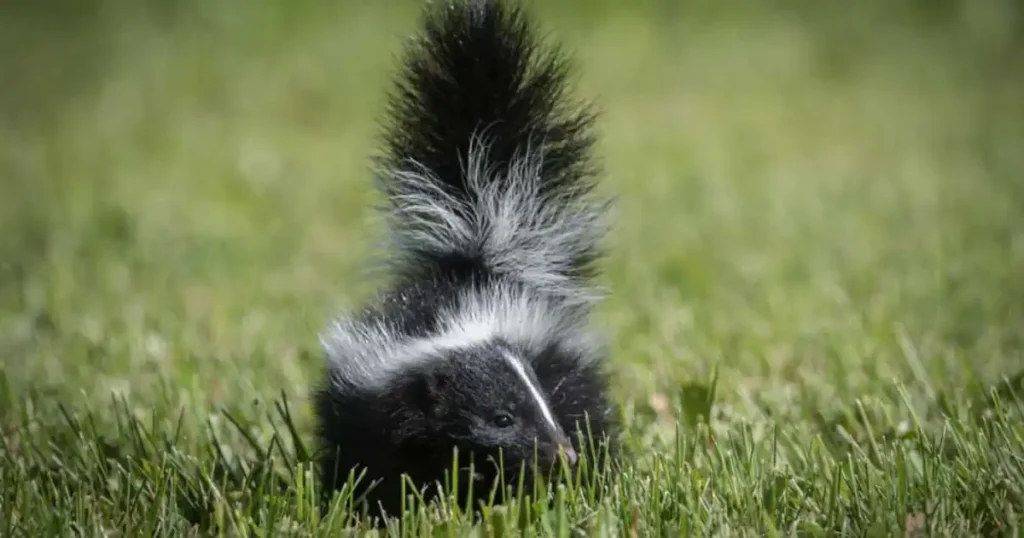
Skunk odor is a pungent and unpleasant smell that can linger for days if not dealt with properly. If you or your pet has had an unfortunate encounter with a skunk, it is crucial to take immediate action in order to minimize the odor and prevent its further dissemination.
Skunk urine is one of the most potent smells that can linger on clothes, skin, and even in the air. To remove skunk urine smell, it's important to use the right products and techniques.
One effective way to remove skunk pee smell is to create a solution of hydrogen peroxide, baking soda, and dish soap. Combine one quart of 3% hydrogen peroxide, 1/4 cup of baking soda, and one teaspoon of dish soap in a bucket. Apply the solution to the affected area and allow it to sit for 10-15 minutes before gently rinsing it off with water.
You could also consider using a skunk odor remover that is available for purchase at many pet stores. These products have been specially formulated to effectively eliminate skunk odor and can be directly applied to the affected area.
Aside from using the appropriate products, it is crucial to thoroughly clean any clothing or bedding that has been exposed to skunk urine. For optimal results, opt for a potent laundry detergent and incorporate a generous amount of white vinegar during the wash cycle to effectively counteract any lingering odors.
Overall, dealing with skunk odor requires a combination of the right products and techniques. By acting quickly and using the proper methods, you can minimize the smell and prevent it from spreading.
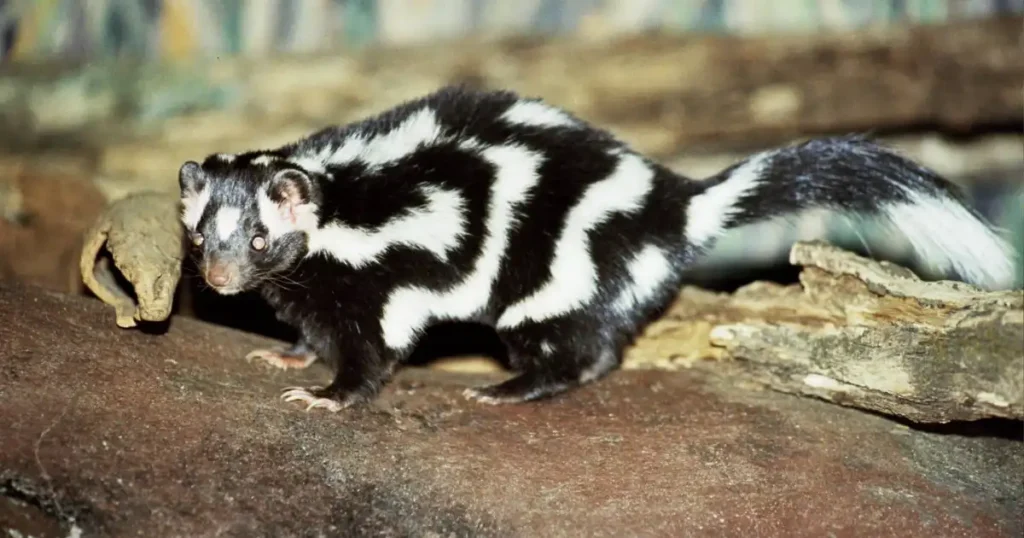
Skunks are known to invade properties in search of food, shelter, and breeding grounds. To prevent skunk encounters, it is important to take necessary precautions. Here are a few tips to deter skunks from your property:
It's worth mentioning that skunks are creatures of the night, preferring to be active after the sun goes down. If you happen to come across a skunk during daylight hours, it could indicate the presence of a sick or injured creature. In such cases, it's best to seek the assistance of a wildlife removal expert who can safely and effectively remove the animal.
Additionally, if you're dealing with other wildlife issues, such as squirrel intrusions, consider our specialized squirrel removal Fort Worth services to address the problem promptly. For all your wildlife removal needs, trust Critter Stop—a professional, humane wildlife removal company with a fantastic reputation and glowing customer reviews. They are known for their high-quality work and exceptional customer service. Call Critter Stop at (214) 234-2616 for a free inspection and let their expert team help you resolve your wildlife or pest removal challenges efficiently.
Following these simple tips can prevent skunk encounters and keep your property skunk-free.
Skunks play a crucial role in maintaining the ecosystem's balance by effectively controlling insect and rodent populations. They are also recognized for their unique scent and capability to release a pungent liquid when in danger.
Skunks have a diverse diet, consuming a wide range of foods such as insects, rodents, fruits, and vegetables. Skunks play a crucial role in maintaining a balanced ecosystem by preying on insects and rodents, which can cause harm to crops and contribute to the spread of diseases. They also help to distribute seeds by eating fruits and vegetables and then dispersing the seeds in their scat.
Coyotes, foxes, and owls are just a few of the predators that prey on skunks. However, skunks have a unique defense mechanism in the form of their spray, which can deter many predators from attacking them.
Skunk poo, also known as scat, can provide valuable information about the animal's diet and behavior. Skunk scat is typically 2-4 inches long and 1/4 to 1/2 inch in diameter, and may contain hair, insect parts, and seeds. By analyzing skunk scat, researchers can gain insights into the animal's diet and the ecosystem in which it lives.
Skunk and raccoon scat can be difficult to differentiate as they both have similar features. However, skunk scat is generally thicker and shorter than raccoon scat. Skunk scat also has a strong odor that is distinct from raccoon scat.
Skunk feces are typically dark brown or black in color and have a twisted, rope-like appearance. They are usually around 1/4 to 1/2 inch in diameter and 1 to 2 inches in length. Skunk feces also have a strong, pungent odor that can be skunk poop identification.
Skunk scat is generally larger and thicker than cat feces. It also has a distinct twisted appearance and a strong odor that is different from cat feces.
Skunks are known to defecate in specific areas known as latrines. These areas are usually located near their den or feeding areas. Skunks may also choose to defecate on elevated surfaces such as rocks or logs.
Yes, the strong, pungent odor of skunk scat is a reliable indicator that it comes from a skunk. The odor is distinct from other types of animal feces and can be easily identified.
When cleaning up skunk droppings, it is important to wear gloves and a mask to avoid coming into contact with the feces or inhaling any harmful particles. The area should be thoroughly cleaned and disinfected using a solution of bleach and water.
Skunks can be a nuisance when they invade your property. They can cause damage to your garden, lawn, and even your home. If you are experiencing a skunk problem, it is important to seek professional help to avoid any potential dangers that may arise.
Critter Stop is a professional, humane wildlife removal company that can help you with your skunk problem. They offer a free inspection to identify the source of the problem and develop a plan to safely and effectively remove the skunks from your property.
Critter Stop has a fantastic reputation and customer reviews online because it provides high quality work and great customer service. They have a team of experienced professionals who are knowledgeable about skunk behavior and can ensure that the skunks are removed safely and humanely.
If you are in need of skunk trapping services, do not hesitate to contact Critter Stop at (214) 234-2616 for a free inspection. They will provide you with a customized solution to solve your skunk problem and ensure that your property is protected from future invasions.
Visit our Critter Library and learn more about our furry friends